Why the Queen didn’t attend Charles and Camilla’s wedding to Camilla Parker Bowles in 2005
Children, relatives and close friends: they were all present and correct at the wedding of Prince Charles and Camilla Parker Bowles.
Absolutely right too. This was not just the formal union of two people deeply in love, but an occasion that should be recorded in history.
However, among the neatly tailored crowd that packed the Windsor Guildhall in April 2005, two distinguished guests were missing.
The Queen and Prince Philip – mother and father of the groom – were nowhere to be seen as the civil ceremony took place.
Where were they? Why would the monarch choose to stay away from her own son’s wedding?
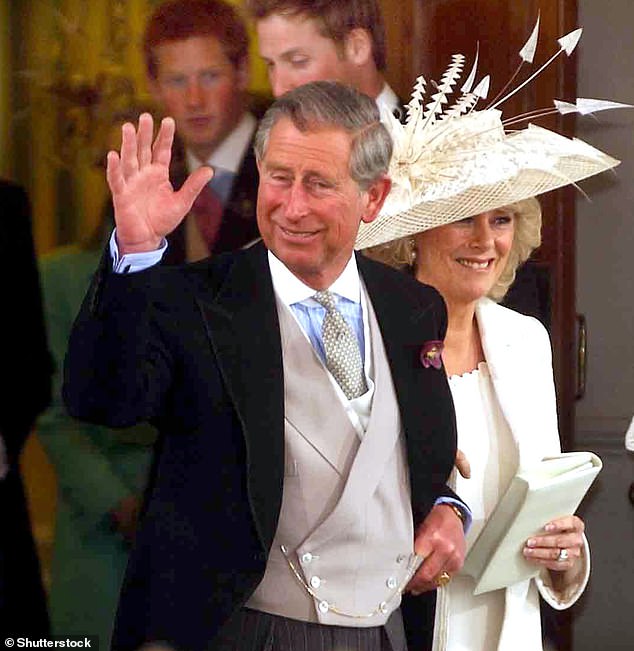
Prince Charles with Camilla, Duchess of Cornwall, left their civil ceremony at the Guildhall, Windsor, in 2005. There was an impressive guest list. Yet his own mother was missing
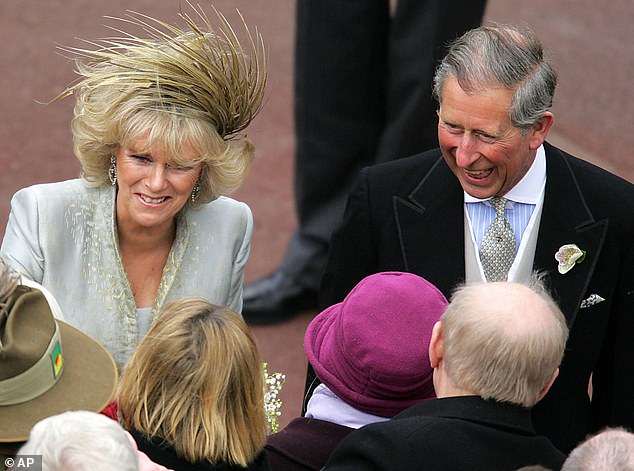

Queen Elizabeth and the Duke of Edinburgh attended the blessing that followed at St George’s Chapel, Windsor. The Queen wore white, but by then Camilla was wearing grey
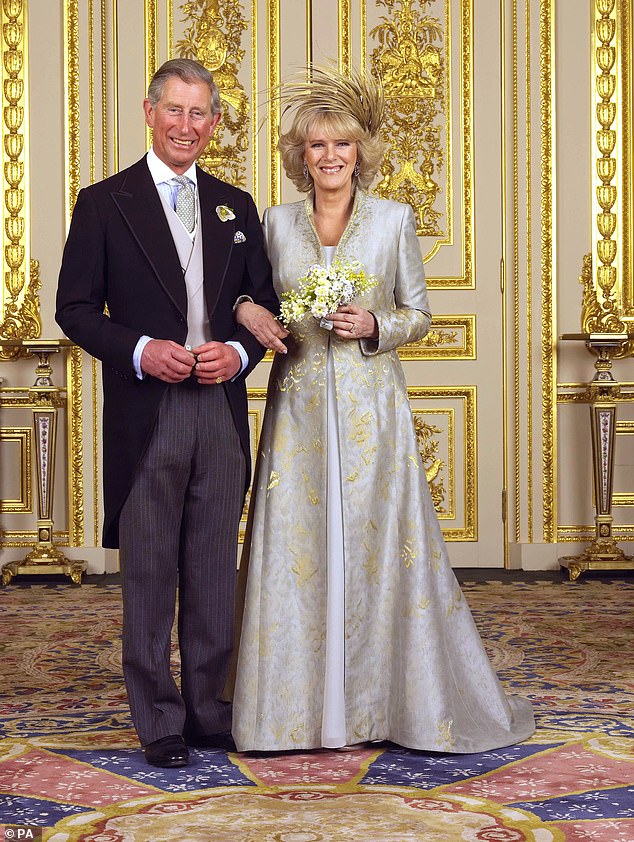

A portrait of the newly married Prince Charles and Camilla, Duchess of Cornwall in the White Drawing Room at Windsor Castle
There is no shortage of speculation. Did she think a regular ‘town hall wedding’ would be beneath her dignity?
Others speculated that Queen Elizabeth disapproved of her son’s relationship.
Charles was, of course, still married when he began an affair with Camilla (although Diana had affairs too).
At one point the Queen referred to Camilla as ‘that evil woman’.
Yet the real reason why the Queen was absent is much simpler than many would think.
As monarch, the queen was head of the Church of England. And both Charles and Camilla had been married before – and then divorced.
Although the Church of England recognizes divorce as a sad fact of life, it does not encourage it.
The Queen, herself a devout believer, could in no way question the values of the Church.
And in the weeks leading up to the wedding, the Telegraph reported that she had told one of her friends: ‘I can’t go. I don’t feel like my position allows this.”
There was also a family history to consider: just one generation before Elizabeth’s reign, the monarchy was in chaos and perhaps even endangered by her uncle Edward VIII’s insistence on marrying a divorcee despite the restrictions of the Church (of which he was also head).
Queen Elizabeth certainly wished the couple well. She attended the religious blessing at St. George’s Chapel with Prince Philip, which followed the civil ceremony at the Guildhall.
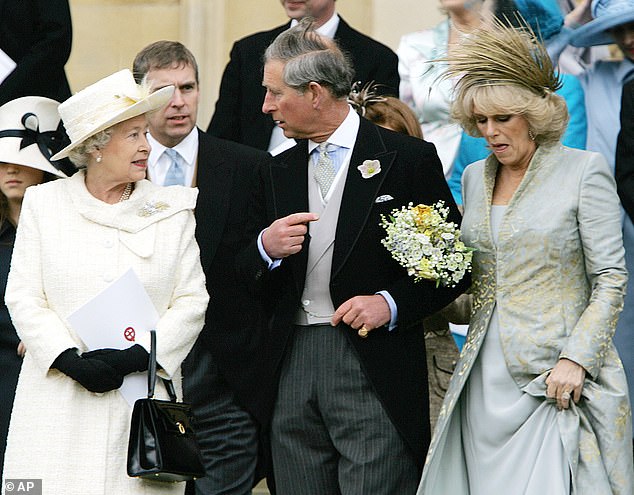

The Queen was unable to attend Charles’ wedding because the Church of England discourages divorce. But she attended the blessing at St. George’s Chapel and is pictured here as they left
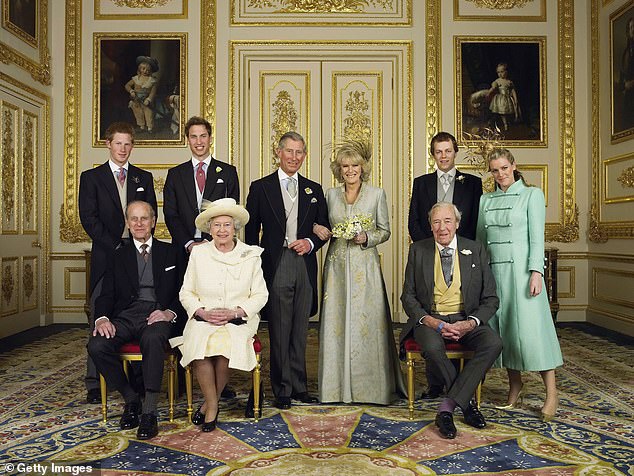

Prince Charles and Camilla surrounded by their family. Back left: Prince Harry, Prince William and Camilla’s children, Tom and Laura Parker Bowles. From front left: The Duke of Edinburgh, the Queen and Camilla’s father Bruce Shand
The Queen and the Duke of Edinburgh then held a wedding reception for the couple.
Her relationship with Camilla, now queen consort, had not always been easy.
Less than a year after Diana’s shocking death, Charles had wanted to be seen in public with Camilla – and had sought his mother’s approval.
The Queen’s response was a pithy reference to that ‘evil’ woman.
Charles was surprised. A former courtier previously told the Mail: ‘He just couldn’t see it. He could not see that this request to the Queen so soon after Diana’s death was far too premature.
‘He was devastated. He couldn’t understand why she had been so bitter against the woman he loved.’
But later, Queen Elizabeth grew fond of Camilla, so much so that the late Monarch publicly announced in 2022 that she would like her daughter-in-law to become Queen Consort when Charles took over the throne.
Speaking on her Platinum Jubilee, just a few months before her, the Queen said: “I remain forever grateful for and humbled by the loyalty and affection you continue to give me.
“And when in time my son Charles becomes king, I know that you will give him and his wife Camilla the same support as you have given me; and it is my sincere wish that when that time comes, Camilla will be known as Queen Consort, while she continues her own faithful service.’
The Queen’s decision to wear white as she greeted the newlyweds was another, albeit less significant, point of controversy.
To some, this could be seen as an unnecessary distraction from the bride.
In this case, however, Camilla had already changed into a gray dress for the reception, so there was no question of standing out.
